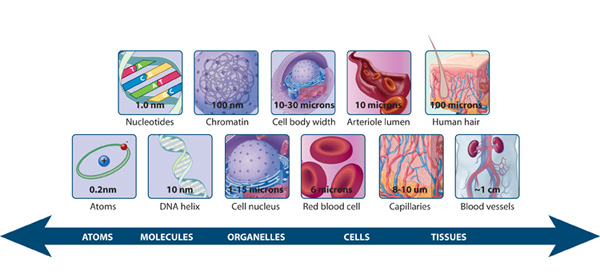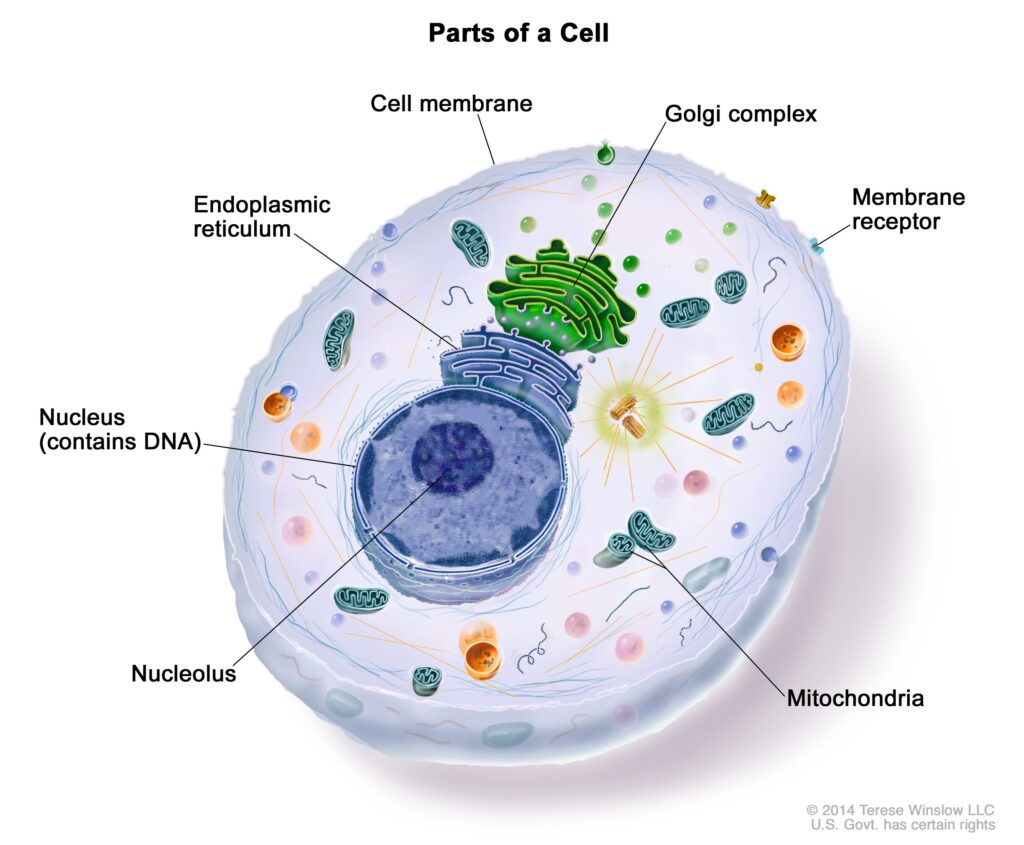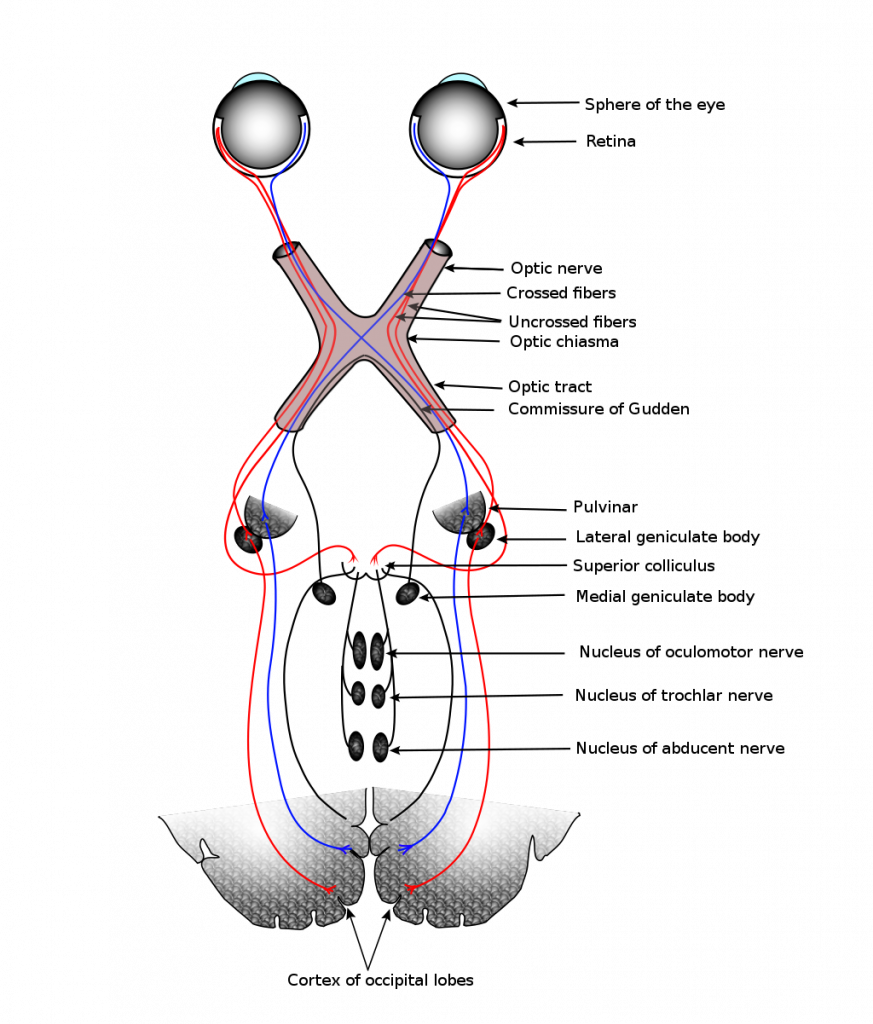This title encapsulates the comprehensive exploration of cell variability in size and shape, highlighting their significance in biological functions and adaptations.
Comprehensive Notes on Cell Size and Shape
Cells exhibit remarkable diversity in size and shape, which are intricately linked to their specialized functions within organisms. Here’s an exploration of these aspects:

Above image ©Prateek Sinha
Cell Size Variability
Our Microscopic Marvels: The Wild World of Cell Sizes (and why they matter!)
You know that feeling when you walk into a room full of people – some towering giants, others barely reaching your waist, and everything in between? Well, that’s kind of what’s happening inside your body, only on a much smaller scale. Cells, the tiny building blocks of life, come in an astonishing variety of sizes, and understanding this diversity is like peeking behind the curtain of the microscopic world.
Size Matters: A Cellular Perspective
Before we dive into the ‘why’ of it all, let’s get a handle on the ‘how big’ or ‘how small’. We measure cells in micrometers (µm) – teeny-tiny units where one µm is a mere 0.001 millimeters. Think about this: a red blood cell, responsible for carrying oxygen throughout your body, is a measly 7-8 µm across. Now picture a nerve cell stretching out for an entire meter – talk about a cellular giant!
The ‘Why’ Behind the Size: It’s Complicated (in a good way!)
So, why all this size variation? It turns out, a bunch of factors come into play, all intertwined in a delicate balancing act:
- Job Description: Just like you wouldn’t hire a lumberjack to do brain surgery, cells are shaped by their function. A nerve cell needs to be long and slender to zap messages across vast distances, while a sperm cell is streamlined for its epic swim to fertilize an egg.
- Surface Area vs. Volume: The Cellular Tug-of-War As a cell gets bigger, its volume grows faster than its surface area. This ratio is super important for taking in nutrients and kicking out waste. Imagine a giant balloon – it’s got tons of space inside, but its surface might not be big enough to let enough air in or out quickly. Cells face the same dilemma. That’s why they often stay small to maintain a good balance, ensuring they can ‘breathe’ and ‘eat’ efficiently.
- DNA Overload: The amount of DNA crammed inside a cell, its genome size, also influences its dimensions. Think of it like a library – the more books you have, the bigger the building needs to be.
- Growing Pains: Cells divide and grow like crazy, especially during development. Their size can change dramatically as they go through these phases.
- Environmental Vibes: Even the world outside the cell matters! Factors like nutrient availability and temperature can impact how big a cell grows. It’s like a plant thriving in sunshine and wilting in the shade.
Size Pros and Cons: The Cellular Trade-offs
- Small is Mighty: Tiny cells are masters of efficiency. They exchange materials across their membranes like lightning, grow and divide rapidly, and adapt to changing environments like champs. But, they’re also a bit more fragile and have limited storage space.
- Big and Bold: Large cells are the storage kings and queens, packing in nutrients and sporting specialized structures for complex tasks. But, they face challenges in internal communication and transport. Imagine trying to shout across a crowded stadium – it’s not easy!
Size Matters in Sickness and Health
Cell size isn’t just a scientific curiosity – it’s deeply connected to our health. When cells go rogue and grow abnormally large, it can be a sign of trouble, like in cancer. Understanding the mechanisms that control cell size could lead to new ways to fight diseases. In fact, researchers at the University of Pennsylvania recently uncovered how a protein called TOR regulates cell growth in response to nutrients, opening exciting new avenues for cancer research (Kim et al., 2017).
The Microscopic World Awaits
The world of cell sizes is a fascinating one, where even the tiniest changes can have huge consequences. From the humble bacteria to the awe-inspiring ostrich egg, the sheer diversity in cell size showcases the incredible adaptability and complexity of life. So, next time you look at the world around you, remember that beneath the surface, a microscopic universe of cells, each with its own unique size and story, is working tirelessly to keep you alive and thriving.
References:
- Alberts, B., Johnson, A., Lewis, J., Raff, M., Roberts, K., & Walter, P. (2015). Molecular Biology of the Cell (6th ed.). Garland Science.
- Kim, J., Guan, K. L., & Neufeld, T. P. (2017). TOR controls cell growth and size through the regulation of ribosome biogenesis. Current Biology, 27(22), R1209-R1210.
- Lloyd, D. (2013). The Mitochondria of Microorganisms. Academic Press.
Remember, the microscopic world is full of wonders, and cell size variability is just one of the many fascinating aspects waiting to be explored. So, keep those eyes wide open, and never stop marveling at the world around you – both big and small!
- Size Range: Cells can vary significantly in size. For instance, bacteria typically range from 0.3 to 5 μm in length, making them some of the smallest cells known. Mycoplasmas, a type of bacteria, are at the lower end of this range, measuring about 0.3 μm in length. On the other hand, the largest isolated single cell known is the egg of an ostrich, which is visible to the naked eye due to its size.
- Human Red Blood Cells: Among multicellular organisms, human red blood cells are approximately 7.0 μm in diameter. These cells are crucial for transporting oxygen throughout the body and have a distinctive biconcave shape, which maximizes their surface area for efficient gas exchange.
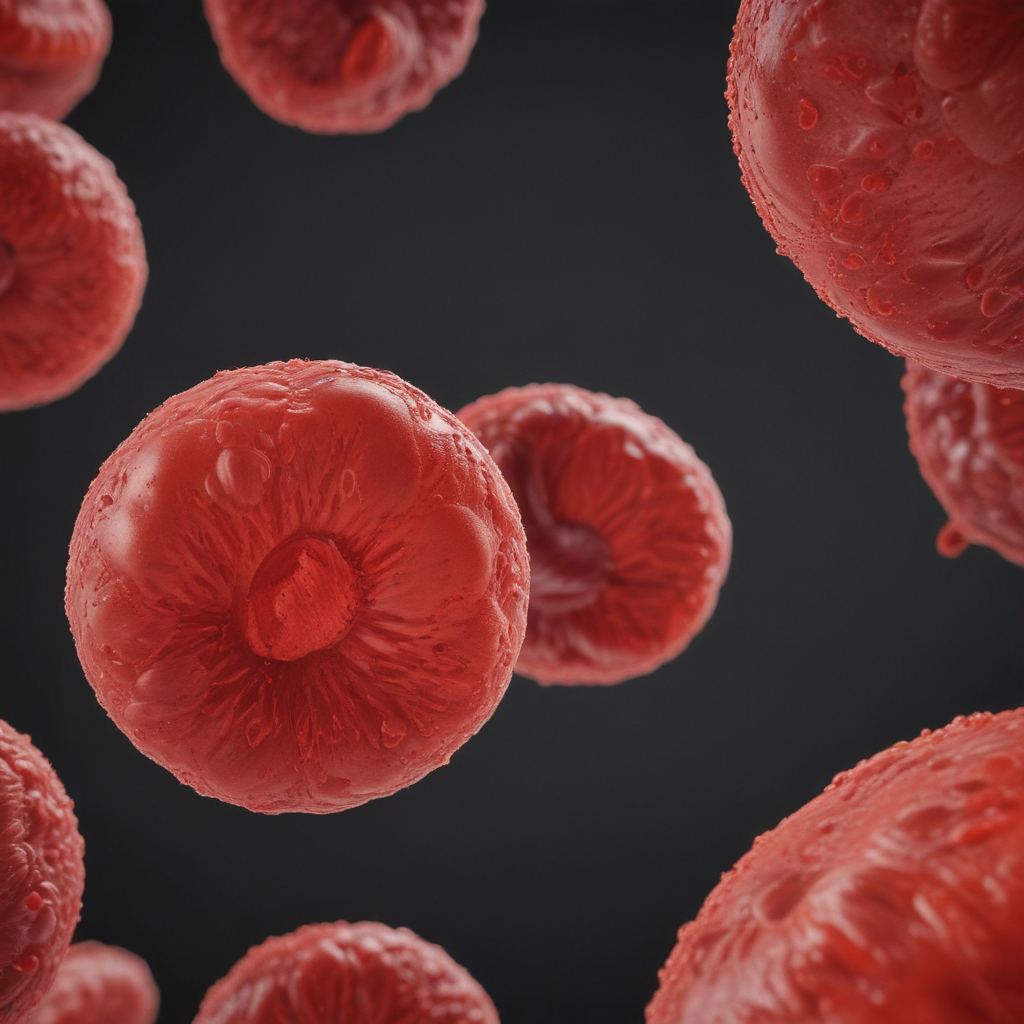
Above image ©Prateek Sinha
- Specialized Cells: Nerve cells (neurons) are noteworthy for their length. Some neurons can extend over a meter in length, such as those that connect the spinal cord to the toes or fingers. This elongated structure enables them to transmit electrical signals over long distances.
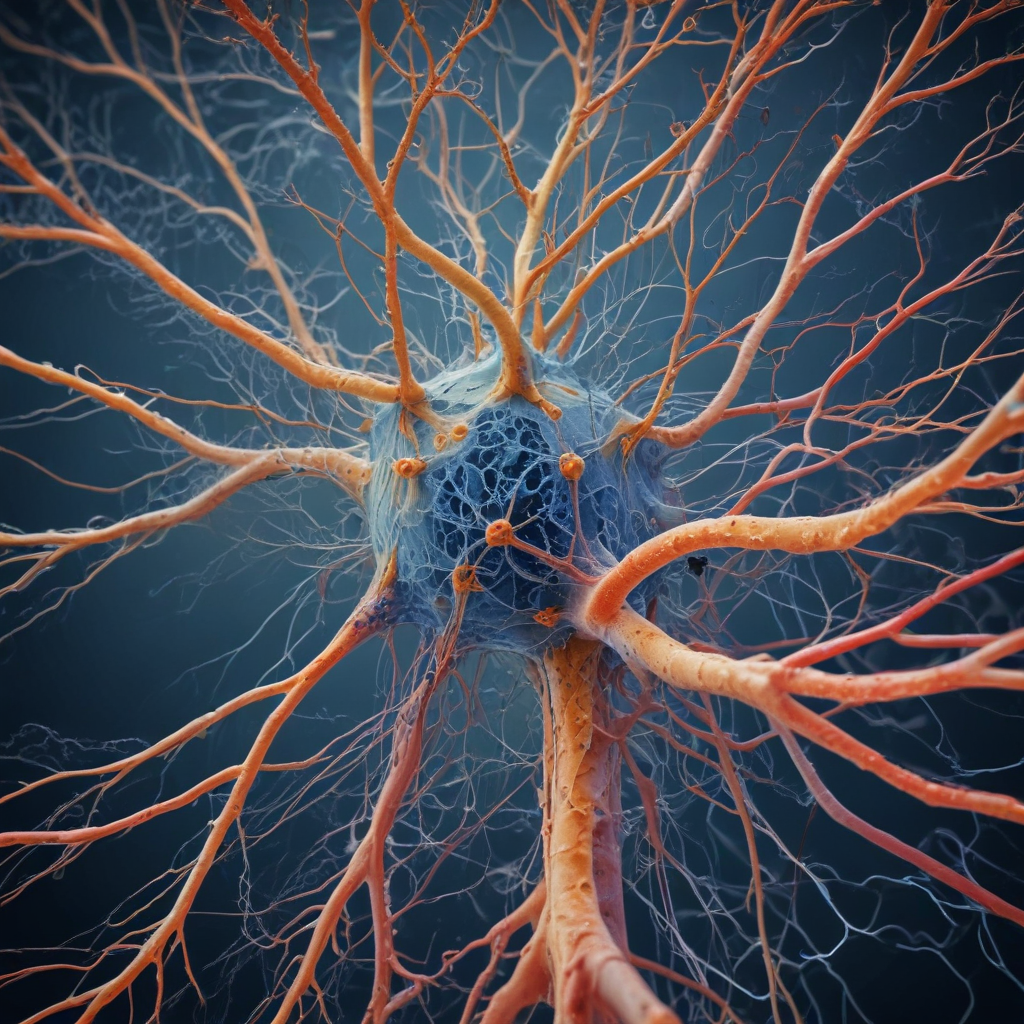
Above image ©Prateek Sinha
Cell Shape Diversity
- Functional Adaptation: The shape of a cell is closely related to its specific function within the organism.
- Types of Cell Shapes:
- Disc-like: Seen in red blood cells, which facilitates easy passage through narrow blood vessels.
- Polygonal: Found in epithelial cells lining organs and surfaces, providing structural support and forming barriers.
- Columnar: Tall and elongated cells, often found in the lining of the digestive tract where absorption and secretion are vital functions.
- Cuboid: Cube-shaped cells found in glandular tissues, where they secrete substances.
- Thread-like: Elongated cells such as muscle fibers, which contract and relax to produce movement.
- Irregular: Cells with no fixed shape, often associated with specialized functions like phagocytosis (engulfing foreign particles) in immune cells.
- Adaptive Features: The shape of a cell influences its ability to interact with its environment and perform specific tasks efficiently. For example, the flat and thin shape of epithelial cells lining the alveoli in the lungs facilitates rapid gas exchange, while the elongated shape of muscle cells enables contraction and relaxation for movement.
Importance in Biology
- Functional Understanding: Studying cell size and shape provides insights into how cells perform diverse functions essential for life processes.
- Medical Relevance: Abnormalities in cell size and shape can indicate underlying health conditions. For instance, changes in red blood cell morphology can signify anemia or other blood disorders.
- Research Applications: Advances in microscopy and imaging techniques continue to unveil new aspects of cell morphology and function, contributing to fields such as medicine, biotechnology, and environmental science.
Conclusion
Understanding the variability in cell size and shape underscores the intricate design and specialization of living organisms. From microscopic bacteria to the complex neurons in the human body, each cell’s structure is finely tuned to support its unique role in maintaining life processes.
- Diagram: Illustration of different cell shapes (disc-like, polygonal, columnar, etc.) and Size comparison of various cells, from bacteria to ostrich egg, highlighting their dimensions.
